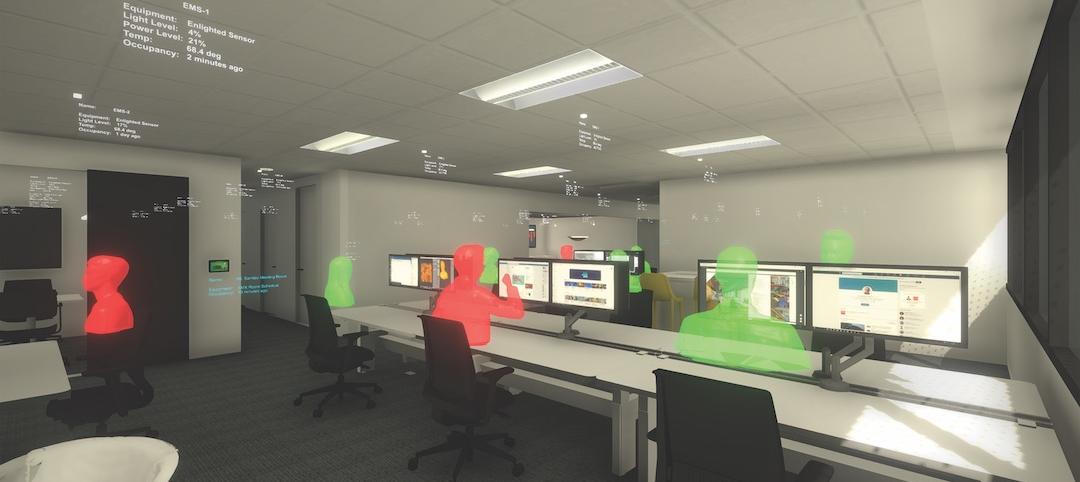Buildings have become data-rich environments, thanks to the proliferation of lower-cost sensing devices with greater computational power and data storage capacity.
As buildings get “smarter,” property owners and managers are looking for ways to organize data sets that derive from myriad formats, naming conventions, and syntaxes within buildings. Consequently, the global market for data integration technologies for buildings is expanding rapidly.
A new report by Navigant Research, “Data Integration for Intelligent Buildings,” estimates that revenue from the sale of these technologies will increase to $971.3 million in 2025, from $89.9 million in 2016.
Data integration still poses challenges, particularly in the area of analysis. The report points specifically to energy management systems in buildings that would be far more efficient if their data could be incorporated with data emanating from a building’s lighting systems, access controls, and demand response systems.
“For years, data-integrated buildings have shown promise in reducing energy and operational costs, especially as regulatory energy efficiency pressures and corporate sustainability strategies increase customer demand for data-driven solutions,” says Alvin Chen, Navigant’s research analyst. “The analytics software to effectively provide actionable insights is still being developed to deliver on this promise.”
The new report focuses on market demand in three areas: software, services, and hardware. It provides insights into the future of fully integrated energy management systems. And it provides forecasts for global market demand segmented by region (North America, Europe, Asia Pacific, and the rest of the world), offering type, and customer type (office, retail, education, healthcare, hotels and restaurants, institutional and assembly, warehouse, and transport), through 2025.
Some key questions the report addresses include:
• What are the challenges to developing expert systems for building integration?
• Which companies are pushing this market forward, and why?
• Which regions show the strongest investments for fully integrated energy management systems?
• How will the interoperability of these systems be further developed?
• Which customer types are likely to adopt data integration technologies the quickest?
The 44-page report identifies and takes a closer look at the marketing strategies of key industry players that include the usual suspects like Cisco Systems, Honeywell and Tridium, Johnson Controls, Intel, and Schneider Electric, along with other suppliers such as Candi Controls, SkyFoundry, Lucid, and Siemens Building Technologies.
Related Stories
Smart Buildings | Nov 20, 2020
The Weekly show: SPIRE smart building rating system, and pickleball court design tips
The November 19 episode of BD+C's The Weekly is available for viewing on demand.
AEC Tech | Nov 12, 2020
The Weekly show: Nvidia's Omniverse, AI for construction scheduling, COVID-19 signage
BD+C editors speak with experts from ALICE Technologies, Build Group, Hastings Architecture, Nvidia, and Woods Bagot on the November 12 episode of "The Weekly." The episode is available for viewing on demand.
Smart Buildings | Oct 26, 2020
World’s first smart building assessment and rating program released
The SPIRE Smart Building Program will help building owners and operators make better investment decisions, improve tenant satisfaction, and increase asset value.
Big Data | Feb 10, 2020
Building sensors: A digital crystal ball
Sensors capture data that provides developers, owners, and AEC firms with actionable insights on building performance.
Big Data | Dec 4, 2019
AEC data's coming out party
AEC firms are finally putting to use project information they’ve been storing in their computers for years.
Sponsored | Big Data | Jul 16, 2019
Solving the Construction Estimating Puzzle: How to Estimate Thoroughly and Accurately for Every Project
Building Technology | Dec 18, 2018
Data and analytics are becoming essential for EC firms competing to rebuild America’s infrastructure
A new paper from Deloitte Consulting advises companies to revise their strategies with an eye toward leveraging advanced technologies.
Big Data | Aug 31, 2018
The building data analytics revolution in three acts
Increased transparency of operational building data is impacting accountability.














